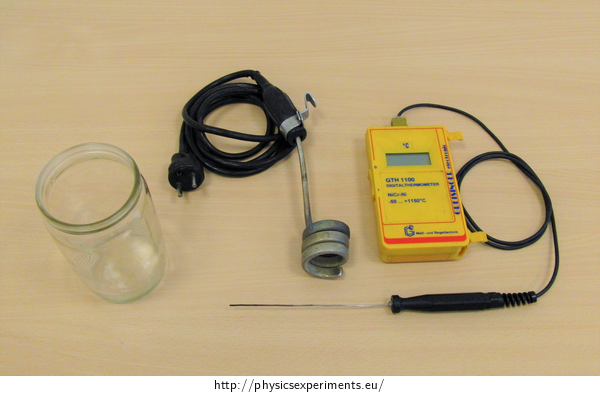Heating Water at the Surface
Experiment number : 2257
Goal of Experiment
This experiment aims at showing that if we heat water at its surface, the water at the bottom stays cold.
Theory
Water density depends on its temperature. The density of water decreases with increasing temperature, provided that the temperature ranges between 3.98 °C and 100 °C.
What happens when water is heated at the bottom
Normally, we heat water at the bottom (e.g. in a kettle or on a heater). Water takes heat from the bottom. Warmer water has lower density, therefore the heated water rises to the surface. Cold water with higher density sinks to the bottom and is heated. Therefore, water circulates in the container and thus the whole volume of water is being heated.
What happens when water is heated at the surface
If we heat water at the surface, its temperature will rise and its density will decrease. Hotter water with lower density will stay at the surface and colder water with higher density will stay at the bottom. Water is a bad heat conductor. Therefore, if we heat water from above, water will boil at the surface, but will be cold at the bottom.
Equipment
High container from cooking glass (we used a jar)
Water
Heater coil
Thermometer

Procedure
Pour water into the container.
Turn on the heater coil and hold it at the water surface.
Measure the temperature at the surface and at the bottom with the thermometer.
Sample Result
We measured the water temperature at the surface, in the middle of the container and at the bottom. At the beginning, the water temperature was ca. 22 °C. Then we heated the water at the surface to temperature higher than 90 °C. In the middle of the container and at the bottom, however, the temperature was still 22 °C.
Pedagogical Notes
On the other hand, if we wanted to cool the water, it would be better to cool it at the surface. Colder water sinks down to the bottom and warmer water rises up to the surface, where it is cooled down.








